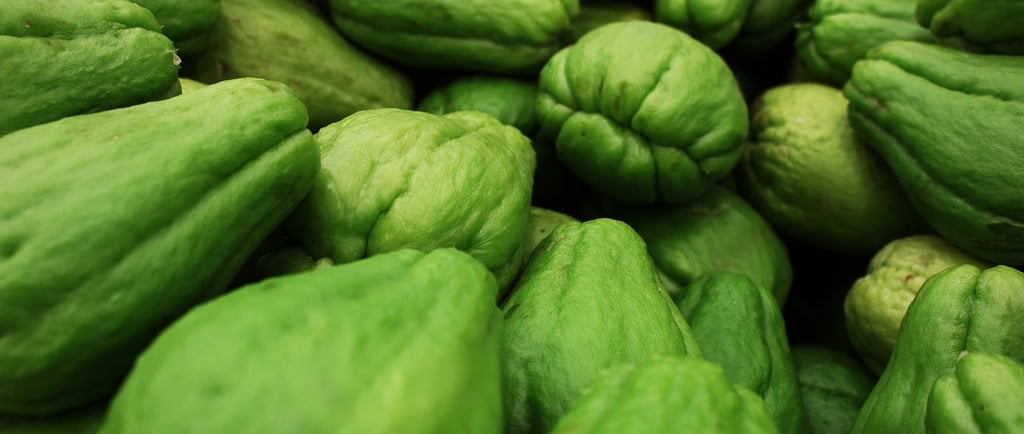Chayote Cultivation Guide: Unlock the Secrets of Growing Squash
Explore our comprehensive guide on Chayote farming! Learn about the best practices, soil requirements, and expert tips for cultivating this unique tropical squash. Whether you're a beginner or an experienced gardener, our guide provides all the essentials to help you achieve a bountiful harvest.
ORGANIC AGRO-LIVESTOCK FARMING
Dr. Emmanuel L Yanthan (MS OB-GYN)
5/11/20243 min read


Business Plan to Harvest 1 Million Chayote Fruits annually in hilly areas of Wokha, Nagaland.
Chayote, scientifically known as Sechium edule, is a versatile squash that belongs to the gourd family. Originating from Central America, it has gained popularity across the globe due to its nutritional benefits and adaptability to various climates, particularly in tropical and subtropical regions. Chayote farming offers a unique opportunity for agriculturalists and home gardeners alike, owing to the plant's prolific nature and the growing demand for exotic vegetables in culinary arts.
The cultivation of Chayote is intriguing and rewarding. This perennial vine thrives in well-drained, fertile soil, and requires a warm climate with adequate sunlight. One of the most distinctive features of Chayote farming is its method of propagation—typically through the planting of mature fruit rather than seeds. Each fruit contains one seed that sprouts within the fruit itself, making the entire fruit the planting material.
Farmers and gardeners value Chayote not only for its fruit but also for its shoots and leaves, which are edible as well. With a taste reminiscent of cucumber and apple, it is used in a variety of dishes, from salads to cooked meals, enhancing both the flavor and nutritional content.
As the interest in diverse and health-supporting foods grows, Chayote farming presents a promising venture. With proper care, including trellising for support, regular watering, and pest management, cultivators can expect a fruitful yield. The guide that follows will delve deeper into the techniques, benefits, and challenges of growing Chayote, providing you with all the knowledge needed to embark on this agricultural adventure.
Below is an outline of Business plan to harvest 1 million Chayote fruits in a season in the hilly areas of Wokha, Nagaland. It involves several key components: land preparation, planting, maintenance, harvesting, and financial projections. Here’s a detailed breakdown:
1. Overview
Objective: To harvest 1 million Chayote fruits per season.
Location: Wokha, Nagaland
Land Requirement: 10 acres
Season Duration: Typically, Chayote can be harvested within 5-7 months after planting.
2. Initial Costs
Land Lease or Purchase: Costs can vary significantly. If leasing, it might cost around INR 10,000 per acre/year in Wokha. Therefore, for 10 acres: INR 100,000/year.
Land Preparation: Including clearing, tilling, and setting up trellises. Estimated at INR 30,000 per acre, hence INR 300,000 for 10 acres.
Planting Material: Assuming seedlings cost about INR 20 each, for 10,000 plants, the cost would be INR 200,000.
3. Operational Costs (Annual)
Labor: Including planting, maintenance, and harvesting. Approx. INR 1,000 per day for 200 days (5-6 laborers): INR 200,000.
Fertilizers and Pesticides: INR 50,000 per season.
Water and Irrigation: Depending on availability, setup might cost INR 100,000, with operational costs at INR 50,000 per season.
Miscellaneous: Including tools, equipment maintenance: INR 50,000.
4. Total Initial Investment
Land Preparation + Planting Material + Labor Setup + Water/Irrigation Setup = INR 600,000 + INR 200,000 + INR 100,000 = INR 900,000.
5. Recurring Annual Costs
Labor + Fertilizers/Pesticides + Water/Irrigation + Miscellaneous = INR 200,000 + INR 50,000 + INR 50,000 + INR 50,000 = INR 350,000.
6. Revenue Projections
Market Price: Assuming a conservative price of INR 5 per fruit, total revenue from 1 million fruits would be INR 5,000,000.
Net Profit: Total Revenue - (Total Initial Investment + Recurring Costs) = INR 5,000,000 - (INR 900,000 + INR 350,000) = INR 3,750,000 in the first year.
7. Break-even Analysis
The break-even point and substantial profits can be reached within the first year, considering the high volume and assuming steady market prices.
8. Risks and Mitigation
Climate Risk: Installation of partial irrigation systems to mitigate unpredictable rainfalls.
Market Risk: Engage in pre-sale agreements with local markets or exporters to secure prices.
Pest/Disease Risk: Regular monitoring and integrated pest management practices.
9. Conclusion
This business plan suggests that harvesting Chayote in Wokha (Nagaland) is a viable agricultural venture with potential profitable returns, provided effective management and marketing strategies are implemented. Regular market analysis and community engagement will further aid in the successful implementation of this project.
